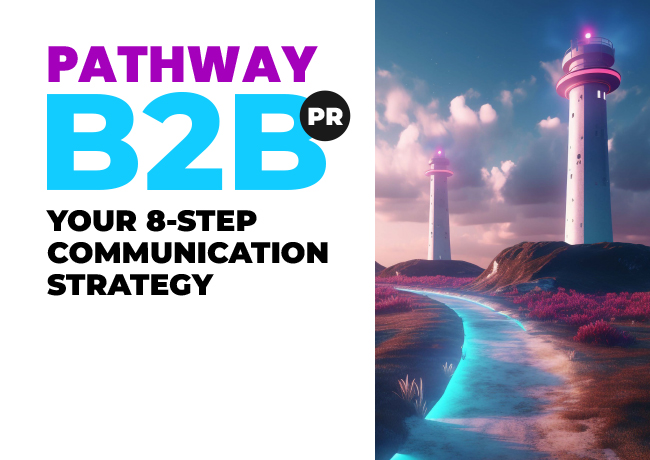
What makes a communication strategy successful?
To make a communication strategy successful, it must be both effective and engaging.
In order to be effective, your communication strategy must be well structured, logical, and concise. There are five key elements that provide your communication strategy with structure and will ensure it is logic and focussed.
To be engaging, your communication strategy needs to help your people to do their job, and achieve their objectives, more easily – giving them a sense of ownership and achievement, in equal measure.
Why does a communications strategy need to be successful?
A communication strategy needs to be successful because it is the plan by which you will achieve your potential. Rooted in fact, guided by experience, and designed to inspire your internal stakeholders and engage you external audiences.
How to structure a communication strategy correctly
There are five essential components in a communication strategy that provide a winning structure. These are set within the context of your commercial, or business, goals. These five elements are:
the value proposition
This articulates why you exist, and embraces your customer-promise i.e. at what you strive to excel.
2 sector prioritisation
This is where you identify your low-hanging fruit. These are your quick and easy (easier) wins because of a good fit.
target personas
By being clear about who your decision-makers are and what pain points or aspirations you want to help them will enable you to develop compelling messaging and achieve laser-accurate targeting.
positioning statements
Your positioning statements clarify why a given decision-maker should want to select your brand over any alternative.
5 messaging, for each stage of the buying cycle
Each stage of the buying cycle requires attention – from wooing to winning, each phase requires a tailored approach.
Each element should be developed in sequence starting with the value proposition. This is because the elements inform each other and co-exist enabling a compelling narrative to be created. If you are not clear on why you exist and what your point of difference is, the customer certainly won’t! If you don’t know where your low-hanging fruit are (sector prioritisation) how can you prioritise resources to address it, and if you don’t know who you are targeting, how can you create messaging that will inspire them to act or think differently in relation to your product or service.
A communication strategy should be concise. If something is brief, it is memorable. If it’s vague or filled with adjectives and long sentences – it will confuse rather than direct. Strategy is, after all, a roadmap for which you need clear, specific, and actionable directions.
What makes a communication strategy inspiring
A marketing communication strategy will only successfully inspire change if your people see its relevance to the role for which they are responsible or the role to which they aspire. Creating a clearly defined, company-wide, mission (value proposition) gives people the opportunity to buy into something special from which they can get a sense of community and status. Providing focus will give staff context to their activities and in turn, will be better able to see the value of their contribution – the more momentum, the better.
It is worth taking the time to consider each part of the communication strategy with different groups of internal stakeholders. Explain to them the purpose of each element and ask them to reflect on how this makes them feel and why. Listen to their answers and consider any resistance. Then ask them what the content and ideas within the communication strategy means to them both as individuals and as ambassadors for the business.
Remember the legendary NASA story:
A successful communication strategy will be rooted in fact
It goes without saying, the reason you recruit the most informed experts within your business to help create the communication strategy is to root it in knowledge and expertise. Expert insight drawn from your best and brightest in operations, sales, product development and customer service are critical to ensuring the robustness of your communication strategy.
The last and most precious piece of insight incorporated into your communication strategy should be gleaned though a customer validation exercise. Where your trusted advisors, and customers, are asked for their perceptions of your brand, service, performance, and marketing. Not only can this feedback be used to fine tune the communication strategy, but it will also provide you with reassurance of the accuracy and focus of your plan before moving into the activation phase.
How do I write a communication strategy?
In our experience, you cannot write a communication strategy alone. It is a collaborative and iterative exercise. Each of the five elements need to be addressed, reviewed, drafted, and re-drafted until your elements are concise, robust, credible, and compelling.
Concise
People remember short punchy phrases not waffly paragraphs, so try and reduce the number of words with each iteration, without losing the sense of what is being stated.
Robust
Challenge your statements so that you have a coherent argument for naysayers further down the line. Remember ‘I know’ always trumps ‘I think’.
Credible
This is strategy not a fairy tale, so every claim must be underpinned with tangible evidence.
4 Compelling
Your communication strategy should excite and inspire your internal and external audiences.
For help developing a compelling communication strategy, reach out to our specialists today. Or download our simple 8-step communication strategy guide here.

Your 8-Step Communication Strategy Guide
A comprehensive guide to delivering your business goals using intelligent and relevant messaging.
Subscribe to our updates
Stay up to date with the latest insights, case studies and PR guides.



